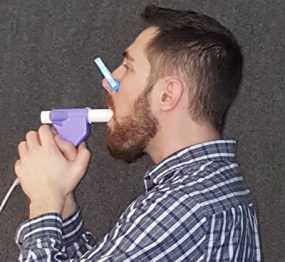Work-related Asthma

Diagnosis
The diagnosis of work-related asthma is based on a combination of medical and exposure history, physical exam, and medical tests (e.g., pulmonary function tests).
History
Consider work-related asthma as a possibility in all working patients with new onset asthma or asthma that clinically worsens after previously being controlled. All working patients with respiratory symptoms should have a comprehensive occupational history and medical history. The occupational history should include current and past job titles, job descriptions, and known exposures.
Examples of occupational history questions to ask working patients with respiratory symptoms include:
- What kind of work do you do?
- Are you now or have you previously been exposed to dust, fumes, or chemicals at your workplace?
- Are your respiratory symptoms better or worse when away from work, such as on weekends or vacation?
- Do you think your health problems are related to your work?
- An electronic occupational exposure history form is available at the Agency for Toxic Substances and Disease Registry (ATSDR) website.
Evaluate the temporal relationship between clinical symptoms and the patient’s work schedule.
- Symptoms of work-related asthma can occur at work in response to an exposure or might be delayed, occurring several hours after work, such as in the evening.
- Symptoms of severe work-related asthma might not improve enough away from work for a work-related pattern to be evident.
Document changes in asthma medication usage.
- Increase in rescue inhaler use could be an early indication that the asthma is progressing.
Physical Examination
- Exam findings are typically non-specific.
- Patients with asthma often have normal physical examinations between asthma attacks.
- If wheezing is present, it is generally on expiration. However, sometimes wheezing might also be auscultated on inspiration.
Differential Diagnosis
Some health conditions have symptoms similar to asthma. In adults, the differential diagnosis of asthma includes the following:
- Chronic obstructive pulmonary disease (COPD)
- Nonasthmatic eosinophilic bronchitis
- Hypersensitivity pneumonitis
- Vocal cord dysfunction
- Obliterative bronchiolitis
Medical Tests
Pulmonary Function Tests
The American Thoracic Society has guidelines on how to perform and interpret pulmonary function tests.

Peak Expiratory Flow
Serial measurements of peak expiratory flow might be useful in the evaluation of work-related asthma. The patient can be instructed on the use of the peak flow meter and asked to record their peak expiratory flow four times a day on days off and on workdays (before work, during work, after work and before going to bed). These measurements should be collected in a journal over several weeks for best interpretations. Click here for an example of a peak expiratory flow rate diary. Many peak flow meters automatically record measurements with date and time information, which can be downloaded at the caregiver’s office for review.
Spirometry
Spirometry requires training to perform and interpret results; therefore, practitioners with limited experience with this diagnostic test should refer patients to occupational asthma specialists. For more information on spirometry, please click on NIOSH’s Spirometry page at http://www.cdc.gov/niosh/topics/spirometry/default.html.
Bronchodilator Reversibility Testing for Spirometry
In patients with airways obstruction on spirometry, often the next step is to assess reversibility with an inhaled bronchodilator. The presence of reversibility supports the diagnosis of asthma.
Nonspecific Bronchial Responsiveness (Bronchoprovocation Testing)
If spirometry is normal but asthma is suspected, bronchial hyperresponsiveness can be assessed using nonspecific bronchial responsive testing (e.g., methacholine or mannitol challenge tests).
Exhaled Nitric Oxide
- Fractional exhaled nitric oxide is a marker of allergic airways inflammation.
- The American Thoracic Society has guidelines on how to measure and interpret exhaled nitric oxide levels.
- Increased fractional exhaled nitric oxide levels support the diagnosis of allergic asthma but does not differentiate between work-related asthma and non-work-related.
- A normal fractional exhaled nitric oxide level does not rule out work-related asthma.
Other Tests
- Serologic testing to measure IgE antibodies for specific allergens.
- Skin prick, patch, or intradermal testing to look for allergic reactions to specific substances.
Some medical conditions can make asthma worse. In some cases, other tests are needed to evaluate for gastroesophogeal reflux and rhinosinusitis.
- Page last reviewed: May 25, 2017
- Page last updated: July 11, 2017
- Content source:
National Institute for Occupational Safety and Health Respiratory Health Division


 ShareCompartir
ShareCompartir